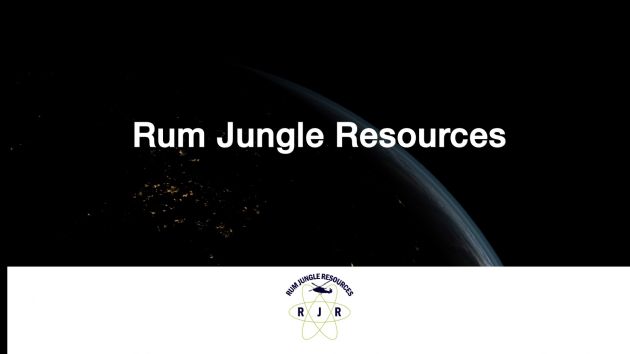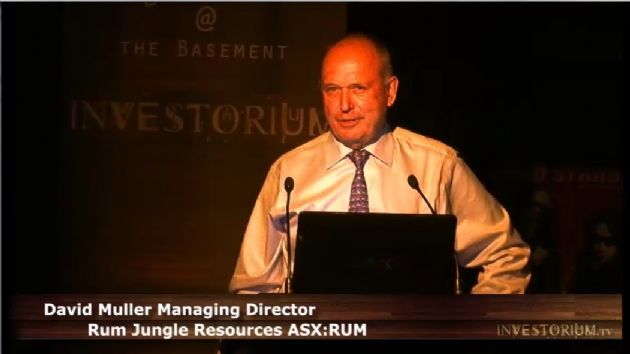 Karinga Creek Resource Estimate
Karinga Creek Resource Estimate
Perth, May 1, 2012 AEST (ABN Newswire) - The Joint Venture partners Rum Jungle Resources Limited ( ASX:RUM) (71%) and Reward Minerals Ltd (
ASX:RUM) (71%) and Reward Minerals Ltd ( ASX:RWD) (29%) are pleased to announce a maiden resource estimate for the Karinga Creek Potash Project which has been reported by Geos Mining Minerals Consultants using data from 55 Sonic drill holes, 8 Vibracore drill holes and 73 brine samples from 23 salt lakes in the project area.
ASX:RWD) (29%) are pleased to announce a maiden resource estimate for the Karinga Creek Potash Project which has been reported by Geos Mining Minerals Consultants using data from 55 Sonic drill holes, 8 Vibracore drill holes and 73 brine samples from 23 salt lakes in the project area.
The resource has been estimated for the potassium dissolved in brines contained in the drilled sediments, as exploitation is envisaged by pumping the brines out, with mineral products being recovered by processes including evaporation, heating/cooling and chemical reaction.
----------------------------------------------------------- K2SO4 (tonnes) (kg /m3 brine) Number of Lakes-----------------------------------------------------------Inferred 52,000 3.90 9Indicated 477,000 4.23 7Total 530,000-----------------------------------------------------------Table 1. Karinga Creek Potash Resource Estimate
NB - the terms inferred and indicated are defined in the JORC code, to represent relative geological uncertainty, although the JORC code was not designed for use in connection with minerals which are dissolved in brines. It is generally accepted that geological uncertainties are greater when dealing with the estimation of brine resources.
The estimated resource is contained in 30M tonnes of brine in 16 salt lakes.
This brine tonnage represents the in situ brine, with no recovery factor applied. It will not be possible to extract all of the contained brine by pumping or trenching; the amount which can be extracted depends on many factors including the clay content and permeability of the sediments.
Schoenite is a mixed potassium magnesium mineral, with a formula of K2Mg(SO4)2.6(H2O), which is likely to be an intermediate product from this brine, which then requires treatment to extract the potassium sulphate (K2SO4, which is a saleable product). The Schoenite resource totals 1.2Mt. The magnesium to potash ratio of the brine is approximately 1.5:1.
To date there has been no test-work on the commercial processing of these brines. Extraction of the potash from these brines is expected to be technically feasible but recovery and economics will depend on many factors, including brine chemistry. Halite and/or thenardite could potentially be produced as by-products.
The resource was estimated using a cut-off grade of 3kg/m3 of potassium. The cutoff was applied on a lake by lake basis. The resource was estimated using the inverse distance squared method. Another seven lakes were drilled but either lack sufficient data or had results which averaged below the potassium cut-off grade The resource has been estimated using an average maximum depth of 3.2 m which was the average depth of the 55 sonic drill holes. Vibracore drill holes and brine samples generally sampled the top metre of lake sediment only. This resource figure is based on the in situ brine resource within the lake sediments of each lake and does not take into account any additional brine resource from outside recharge.
Whilst the Joint Venture is please to announce a maiden resource, work programs for the year starting in May are expected to significantly increase the size and confidence of the Schoenite brine resource. An archaeological survey was completed last week prior to construction of new access tracks within the project area. These new tracks have been approved by the Department of Resources. A follow up fauna and fauna survey will commence on May 14.
It should be noted from previous announcements that many drill holes ended in high grade brine in a fractured siltstone aquifer beneath the salt lakes. Planning has now been completed with a drilling contractor and hydrogeologist engaged to commence an Air Core drilling program with holes planned to a minimum depth of 12 m. Approximately half of these drill holes will be cased with 100 mm PVC to allow pump testing to determine recharge, transmissivity and specific yields with the fractured siltstone aquifer in the Horseshoe Bend Shale beneath the salt lakes. All drill holes will be sampled at 3m intervals to determine the geochemistry of the brine. This drill program will allow an upgraded resource estimate to be released later in the year.
Four trenches up to 100 m long have also been planned. Pump testing from these trenches over 5 days will allow estimates to be made of recharge, transmissivity and specific yields of the shallow lake sediments.
The project is ideally located close to the Lasseter Highway and also close to a rail siding at Kulgera. The joint venture believes it is too early to make statements about possible production rates or economics of the project at this stage and will wait until a resource upgrade has been announced later in the year and pump testing of bore holes and trenches has been completed.
About Verdant Minerals Ltd
 Verdant Minerals Ltd's (ASX:VRM) strategic intent is to create shareholder value through the discovery, development and operation of fertiliser and industrial mineral projects, located in close proximity to existing transport infrastructure, with a primary focus on the Northern Territory of Australia.
Verdant Minerals Ltd's (ASX:VRM) strategic intent is to create shareholder value through the discovery, development and operation of fertiliser and industrial mineral projects, located in close proximity to existing transport infrastructure, with a primary focus on the Northern Territory of Australia.
![abnnewswire.com]()
Related Companies
Social Media
Share this Article

 ASX:RUM) (71%) and Reward Minerals Ltd (
ASX:RUM) (71%) and Reward Minerals Ltd ( ASX:RWD) (29%) are pleased to announce a maiden resource estimate for the Karinga Creek Potash Project which has been reported by Geos Mining Minerals Consultants using data from 55 Sonic drill holes, 8 Vibracore drill holes and 73 brine samples from 23 salt lakes in the project area.
ASX:RWD) (29%) are pleased to announce a maiden resource estimate for the Karinga Creek Potash Project which has been reported by Geos Mining Minerals Consultants using data from 55 Sonic drill holes, 8 Vibracore drill holes and 73 brine samples from 23 salt lakes in the project area. Verdant Minerals Ltd's (ASX:VRM) strategic intent is to create shareholder value through the discovery, development and operation of fertiliser and industrial mineral projects, located in close proximity to existing transport infrastructure, with a primary focus on the Northern Territory of Australia.
Verdant Minerals Ltd's (ASX:VRM) strategic intent is to create shareholder value through the discovery, development and operation of fertiliser and industrial mineral projects, located in close proximity to existing transport infrastructure, with a primary focus on the Northern Territory of Australia.











